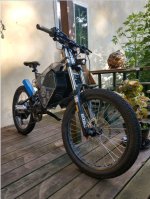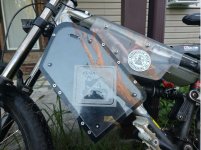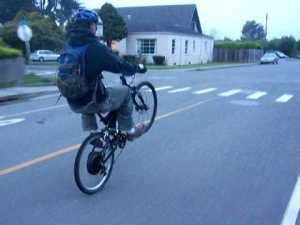DogDipstick
100 kW
Yes, that is my fathers mechanical engineering company. Our seal.
I like to cut it into whatever I can, and yes, we have stickers, and buttons, and BSECo. pens to give out to customers. All kinds of shwag. Licensed to engineer in the US.
Being a working Steam Engineer is a very old, honorable practice. The man in charge. The man who says what happens when. We build steam engines. That is a pic of Chris ( that is not my dad), next to his build, that has taken about 10 years so far. It will go on a 120ft ship sometime soon. Entirely copied from 1860's drawings of the original ( and the same dimension, ie, size.. as the original 1860 engine.. built with modern tooling). All real documentation ( blueprints) of the original Victorian-Age walking beam has been lost, we are in charge of all the valve works, piston designs, linkages, and timing systems. That is my dads customer/friend.
The engine is a 13" bore, by 27" stroke.
To be able to run a steam engine reliably, is a real challenge.. when you have the lives of all aboard in your hands. Steam boiler explosions are quite deadly and violent, as we all know. I am, in fact, a little scared, for I have never been formally trained as a boiler engineer. Engineer certification is not trivial. I would not pass the certification tests in my area, I know. I would need years as a intern first, and to be union, commited. I have a few friends who are certified steam boiler engineers.
I will get to the other questions soon, too.. I have to get out there and do some shipping right now.
I like to cut it into whatever I can, and yes, we have stickers, and buttons, and BSECo. pens to give out to customers. All kinds of shwag. Licensed to engineer in the US.
eMark said:My great grandfather was employed as a Steamboat Engineer, Clerk and Cub Pilot on the Mississippi River running Steamboats between St. Paul and St. Louis.
Being a working Steam Engineer is a very old, honorable practice. The man in charge. The man who says what happens when. We build steam engines. That is a pic of Chris ( that is not my dad), next to his build, that has taken about 10 years so far. It will go on a 120ft ship sometime soon. Entirely copied from 1860's drawings of the original ( and the same dimension, ie, size.. as the original 1860 engine.. built with modern tooling). All real documentation ( blueprints) of the original Victorian-Age walking beam has been lost, we are in charge of all the valve works, piston designs, linkages, and timing systems. That is my dads customer/friend.
The engine is a 13" bore, by 27" stroke.
To be able to run a steam engine reliably, is a real challenge.. when you have the lives of all aboard in your hands. Steam boiler explosions are quite deadly and violent, as we all know. I am, in fact, a little scared, for I have never been formally trained as a boiler engineer. Engineer certification is not trivial. I would not pass the certification tests in my area, I know. I would need years as a intern first, and to be union, commited. I have a few friends who are certified steam boiler engineers.
I will get to the other questions soon, too.. I have to get out there and do some shipping right now.





